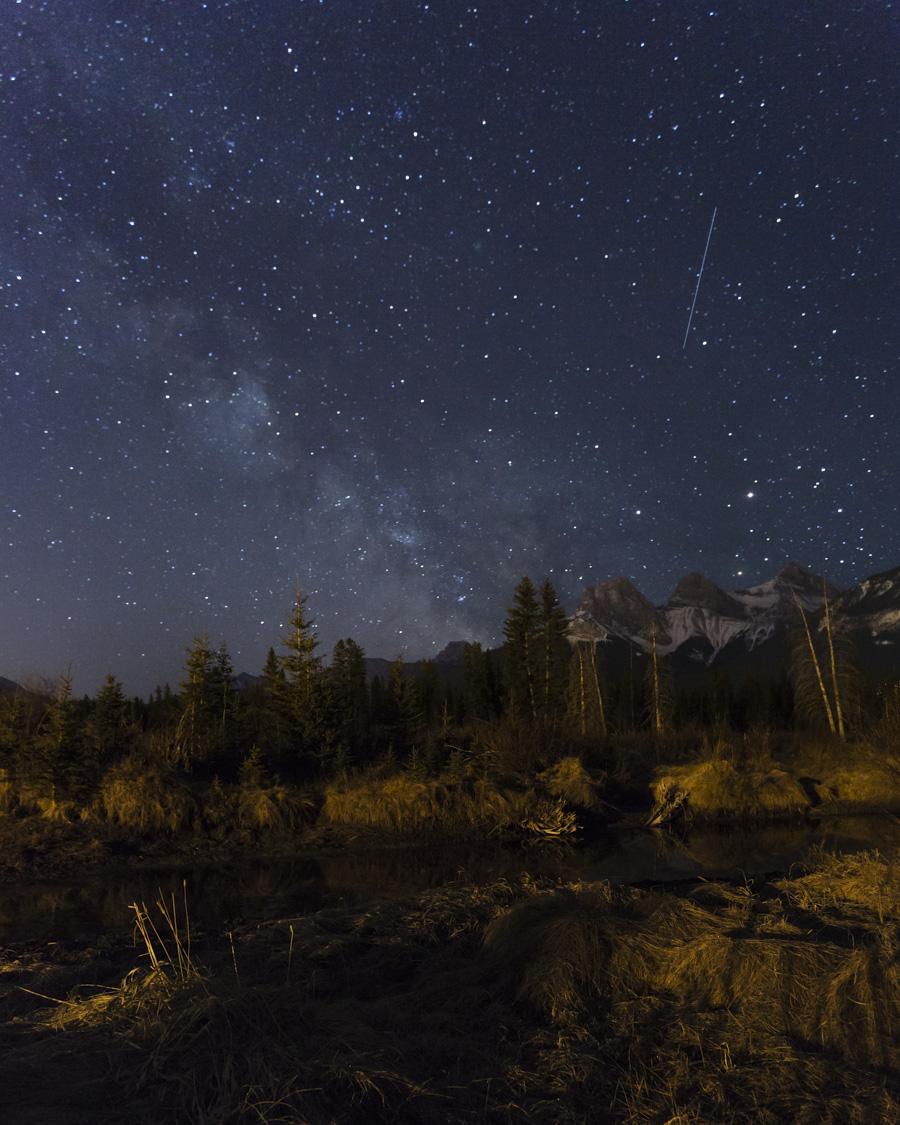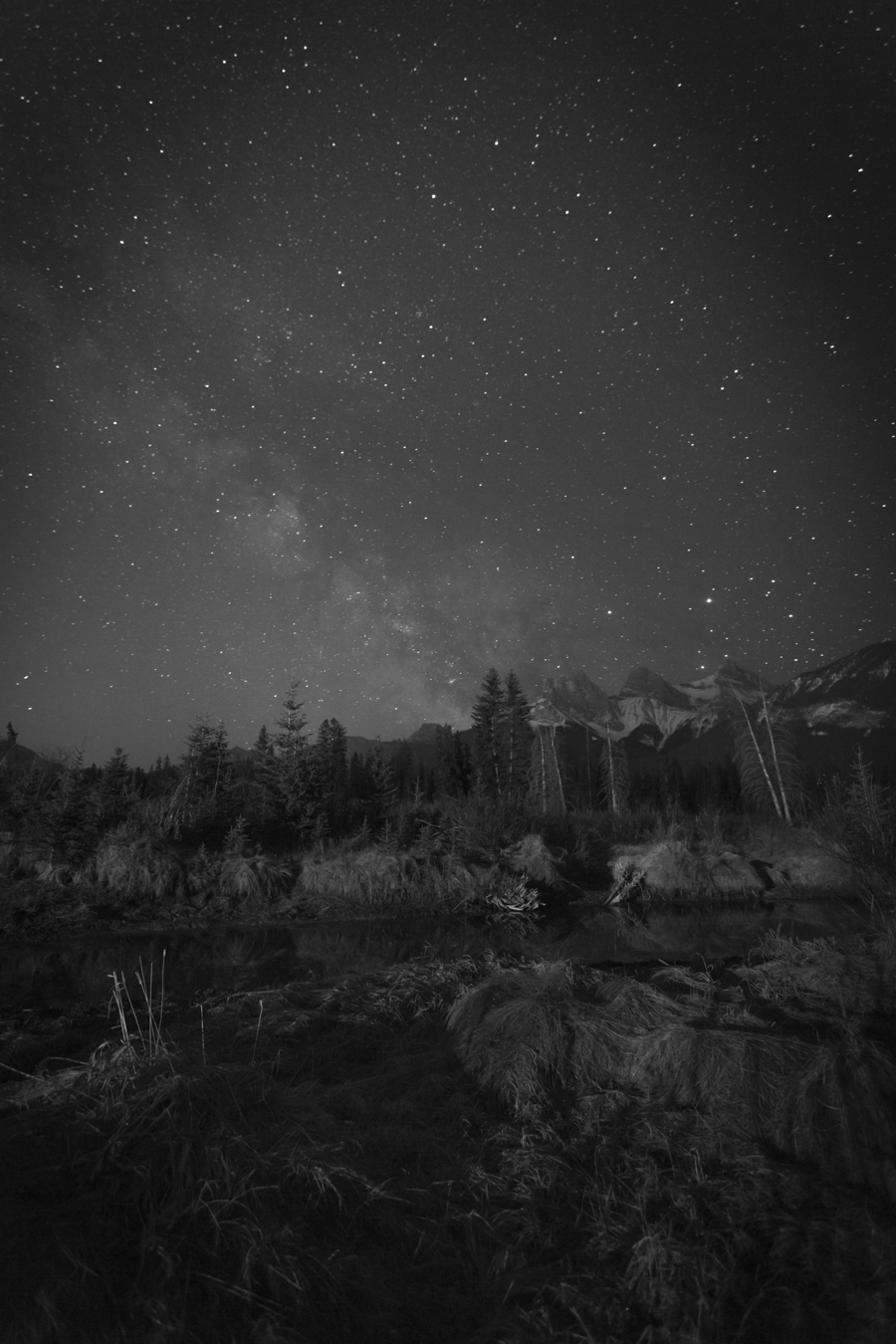Earlier today (4:00 am) I ventured out into the cold (3 deg C or 38 deg F) with two friends from the Canmore Camera Club. They had determined that the Milky Way would be very visible at this hour, close to Canmore’s landmark peaks, the Three Sisters. We set up in a good location and were not disappointed by the beautiful night sky we were able to photograph. Here’s the first one, the colour version. The Three Sisters are quite visible on the right side and you can see the Milky Way angling across the left side of the image. As a bonus, I picked up a shooting star (upper right) which wandered into my scene. There’s a small creek in the foreground, you can see its banks quite clearly,

I tried several shots from this same location. I liked the one above and the Black and White version I’ve included next. My colleagues were a bit concerned with a sodium vapour light behind us that cast a very warm and artificial glow on the foreground before us. We each chose to deal with it in a different way. I altered the white balance to achieve the brown-yellow cast (more green, less magenta) to the grass and a much cooler tone in the sky (more blue, less yellow). One of my cohorts chose to do away with the colour entirely in one of his shots. I liked it and have chosen to convert one of mine as well, the following shot.

A few comments about technique. As you can imagine, it’s very dark at this hour in the location we had chosen. You can’t walk to the site without a flashlight or headlamp. To get a picture, I set up the camera to gather as much light as possible in the time available. Time is limited. Due to the rotation of the earth, the stars are moving in relation to the camera’s position. Too long an exposure results in that movement becoming apparent. The stars will be captured as streaks, not pinpoints of light. There is a “rule of thumb” that the time the shutter remains open is 500 divided by the focal length of the lens. In my case, using a wide angle lens set to a focal length of 17 mm, the maximum shutter speed I want is 500/17~=30 seconds. To ensure I gather as much light as possible in that time, I set the aperture to f4.0, the maximum for this particular lens. I then increase the sensor sensitivity (ISO) to achieve the exposure I want, in this case 1,250. It usually requires a couple of shots to find the ISO setting you want. Not difficult. I use two other settings, “Long exposure noise reduction” and “High ISO speed NR” to minimize electronic noise.
There a couple of practical considerations to keep in mind in the dark. Carry a flashlight or wear a headlamp to find your way in the dark and make camera adjustments. (Headlamps can be purchased with a “red light” option which enables you to see without greatly reducing the sensitivity of your eyesight.) Infra-red autofocus doesn’t work in the dark. Manual focus doesn’t work if you can’t see what you are trying to focus upon. For a shot like this, where the subject is far away, the focus distance can be set to infinity and everything beyond a few feet from the camera will be in acceptable focus. It helps to fine tune this setting in daylight, in advance.

Both of these are very nice images – well composed and executed. While I like them both, I particularly like the colour shot.
Thank you also for your comments on technique; always helpful, and I have filed, of course.